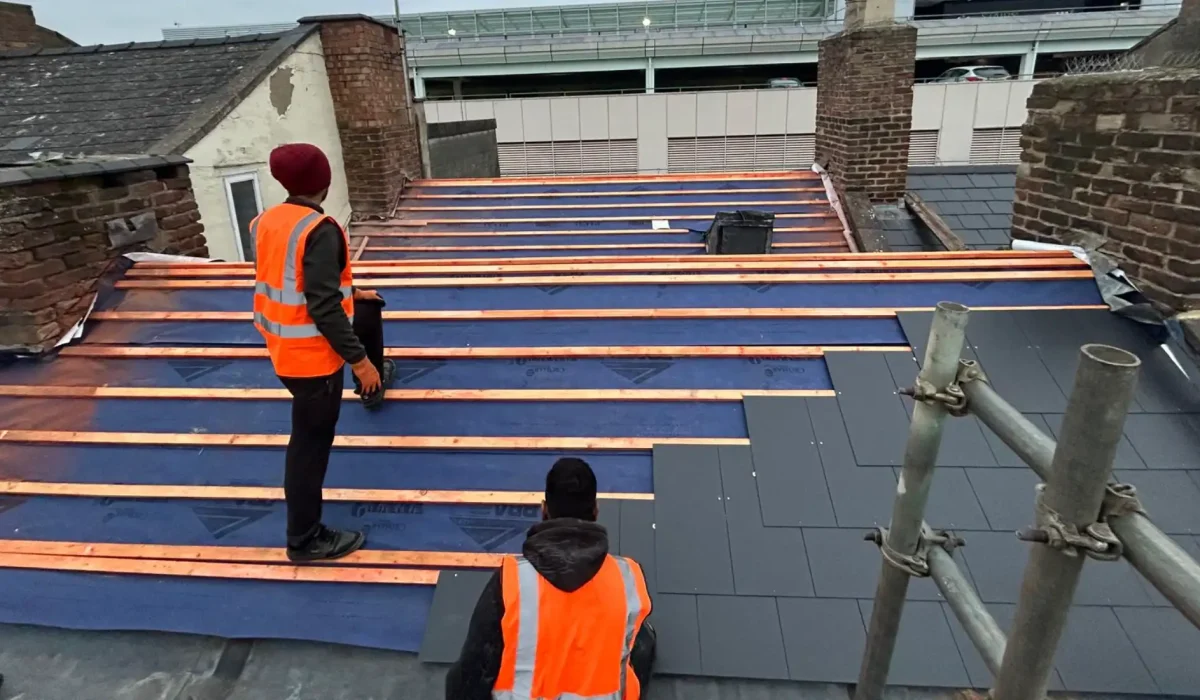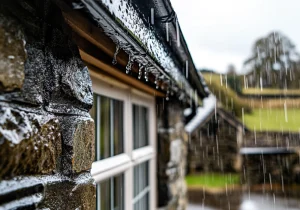Regular roof maintenance protects your home and helps avoid expensive roof repairs. These essential roof maintenance tips to prevent costly repairs can extend your roof’s lifespan and preserve its condition. By following simple practices, you ensure long-term protection for your property while avoiding unnecessary roofing expenses, costly roof fixes, and expensive roof replacements.
Conduct Regular Roof Inspections
Regular inspections allow you to identify potential problems early, ensuring that minor issues are addressed before they become costly and more significant repairs.
Schedule Biannual Checks
Regular roof inspections are essential for identifying issues before they escalate. You can catch seasonal damage early by scheduling checks twice a year, preferably in spring and autumn. These inspections help prevent costly repairs and ensure your roof remains in top condition. Make a habit of setting reminders to prioritise these checks.
Focus on Vulnerable Areas
Some areas of your roof are more prone to problems than others. Pay close attention to roof valleys, chimneys, flashing, and skylights, as these spots often experience wear and tear. Including these checks as part of your essential roof maintenance tips to prevent costly repairs can help avoid water leaks and structural damage. If you’re unsure how to inspect these areas safely, consider hiring a professional.
Look for Signs of Damage
During your inspections, watch for visible signs of damage. Cracked, curling, or missing shingles indicate potential problems. Also, check for moss, algae, or other growths that can weaken roofing materials. Spotting these issues early allows you to address them quickly, protecting your home from further damage. If in doubt, consult an experienced roofer for guidance.
If you’re uncomfortable performing inspections, consider hiring a professional roofing contractor.
Keep Gutters Clean and Functional
Clogged gutters can cause serious problems, including water overflowing onto your roof, leading to structural damage and deterioration over time. Blockages prevent proper water drainage, which can result in pooling, leaks, and even damage to the foundation of your property if not addressed promptly.
Regular Cleaning of Your Gutters
Keeping your gutters clean is essential for preventing blockages that can lead to water damage and roof deterioration. Leaves, twigs, and debris often collect in gutters, especially during autumn, and can disrupt water flow. Make it a routine to clear your gutters at least twice a year. Regular cleaning ensures functionality and helps maintain the overall integrity of your roofing system.
Install Gutter Guards
Gutter guards are a practical solution to reduce the frequency of cleaning and protect your system from clogging. These guards prevent debris from accumulating while allowing water to flow freely. Installing high-quality gutter guards saves time and effort in maintenance, ensuring your gutters remain effective throughout the year. Discuss options with a professional to choose the best system for your home.
Ensure Proper Gutter Drainage
Proper drainage is vital to protecting your roof and property’s foundation. Ensure your gutters are securely attached and angled correctly to direct water away from your home. Check that downspouts are functioning properly and extend far enough to avoid water pooling near the base of your house. Regularly inspect and maintain the system to prevent water-related issues like leaks or erosion.
Maintaining clean gutters protects both your roof and your home’s structure.
Trim Overhanging Branches
Overhanging branches pose a significant risk to your roof. They can scrape against the surface during windy conditions, damaging shingles or tiles. Additionally, the shade they provide creates a damp environment that promotes the growth of moss, algae, and mildew, all of which can weaken roofing materials over time and reduce the roof’s lifespan. Regular pruning of these branches is essential to minimise these risks and protect the structural integrity of your roof.
Regular Pruning
Regular pruning of overhanging branches is crucial for protecting your roof. Branches that extend too close can scrape against shingles or tiles during windy conditions, causing damage. Trimming these branches minimises the risk of physical harm to your roof. It’s best to inspect nearby trees seasonally and prune as needed to maintain a safe distance between the branches and your roof.
Prevent Debris Accumulation
Overhanging branches often drop leaves, twigs, and other debris onto your roof and gutters, leading to blockages and water flow issues. This debris can retain moisture, accelerate wear and encourage the growth of moss and algae. Regularly clearing debris and pruning branches reduces this buildup, ensuring your roof and gutters function effectively and remain in good condition.
Enhance Sun Exposure
Excessive shade from overhanging branches can create a damp environment on your roof, which fosters moss, algae, and mildew growth. By pruning these branches, you allow more sunlight to reach the roof’s surface, keeping it dry and reducing the risk of biological growth. Enhanced sunlight exposure helps maintain your roof’s appearance and extends its lifespan.
Proper tree maintenance reduces the risk of damage and prolongs roof life.
Address Leaks Promptly
Ignoring leaks, no matter how small they may seem, can result in severe structural damage to your home over time. Water intrusion through even a minor leak can seep into walls, ceilings, and insulation, causing rot and mould growth and weakening the integrity of your property’s framework. If left unaddressed, these issues can escalate into costly repairs and compromise the safety and stability of your home. Taking prompt action to fix leaks is essential to prevent these long-term consequences.
Take Immediate Action
When you spot signs of a roof leak, taking immediate action is crucial to prevent further damage. Delaying repairs can allow water to seep deeper into your home, leading to structural problems and expensive restoration work. As soon as you notice water stains, drips, or damp areas, locate the source of the leak and apply a temporary fix if possible. Quick responses can help minimise the extent of the damage while you arrange for a permanent repair.
Inspect Attic and Ceilings
The attic and ceilings are often the first places where leaks become noticeable. Regularly inspect these areas for tell-tale signs such as water stains, damp patches, or mould growth. Use a flashlight to check for dark spots or streaks on the roof’s underside in the attic. These inspections can help you catch leaks before they become visible inside your living spaces. Identifying leaks in their early stages helps prevent widespread damage to your home.
Consult Gutter Cleaning & Maintenance Professionals
While some leaks might seem manageable, it’s always best to involve a professional roofer for thorough assessment and repair. Experts can accurately locate the source of the problem, including hidden or hard-to-reach leaks, and provide a long-lasting solution. Professional services ensure that the repairs are completed with suitable materials and techniques, reducing the risk of recurrence. Consulting a specialist for persistent or complex leaks guarantees peace of mind and protects your home’s structural integrity. Timely repairs prevent minor issues from escalating into significant expenses.
Maintain Roof Flashing
Flashing plays a critical role in your roof’s defence against water intrusion by sealing the joints and vulnerable areas where the roof meets other structures, such as chimneys, vents, skylights, and walls. This protective barrier ensures that water cannot penetrate through these intersections, which are particularly prone to leaks. Including flashing checks in your essential roof maintenance tips to prevent costly repairs ensures these areas remain secure. Properly installed and well-maintained flashing not only safeguards your roof from water damage but also helps prevent moisture from reaching the interior of your home, protecting ceilings, walls, and insulation. These critical points can become weak spots without adequate flashing, leading to costly repairs and structural issues.
Regular Inspection of Your Roof Flashing
Regularly inspecting your roof’s flashing is essential for preventing water damage. Over time, flashing can develop cracks, rust, or gaps due to weather exposure or natural wear. Focus on areas around chimneys, skylights, vents, and valleys, as these are common trouble spots. By checking your flashing at least twice a year or after severe weather, you can catch early signs of damage and address them before they escalate.
Ensure Proper Sealing
Flashing is a barrier against water intrusion but must be sealed correctly to work effectively. Gaps or loose sections can allow water to seep through, leading to leaks and structural damage. During inspections, ensure that all edges of the flashing are tightly sealed and free from visible wear. If you notice any issues, promptly reseal or replace the flashing to maintain its protective function.
Use Quality Roof Flashing Materials
The durability and effectiveness of flashing depend significantly on the materials used. Opt for high-quality materials such as aluminium, copper, or galvanised steel, which are resistant to corrosion and can withstand harsh weather conditions. Investing in superior materials ensures a longer lifespan and reduces the likelihood of future repairs. For new installations or replacements, consult a professional to select the best material for your roof’s needs.
Well-maintained flashing is vital for preventing leaks.
Remove Roof Moss and Algae
Moss and algae growth on your roof can cause significant long-term damage by slowly degrading the roofing materials. Moss retains moisture, creating a damp environment that can weaken shingles or tiles and promote rot. Algae, on the other hand, often form dark stains, affecting the roof’s appearance and absorbing heat, increasing wear on the roofing surface. If left untreated, these growths can compromise the structural integrity of your roof, leading to leaks, reduced lifespan, and costly repairs. Regular cleaning and preventative measures are essential to protect your roof from these harmful effects.
Regular Roof Cleaning
Regular cleaning is vital to remove moss and algae accumulating on your roof. Over time, these growths hold moisture, which can seep into roofing materials and weaken their integrity. Cleaning your roof at least once or twice a year helps maintain its appearance and functionality. Use a soft brush or a low-pressure washer to gently remove moss and algae without damaging the roof’s surface. Routine maintenance not only prevents problems but also extends the lifespan of your roof.
Prevent Moss & Algae Growth on Your Roof
Preventative measures can help reduce the risk of moss and algae forming on your roof. Installing zinc or copper strips near the roof’s ridge is an effective way to deter growth. When it rains, these metals release particles, creating an environment where moss and algae struggle to thrive. Additionally, ensure adequate sunlight exposure by trimming overhanging branches and maintaining proper roof ventilation. Prevention strategies are cost-effective and protect your roof from unnecessary wear and tear.
Ensure Safety
Safety should always be a priority when dealing with roof cleaning or maintenance. Climbing onto your roof can be hazardous, especially if it’s steep or slippery due to moss and algae. If you’re unsure how to clean the roof safely, hire a professional cleaning service. They have the tools, experience, and knowledge to handle the task without risking injury or causing damage to your roof. Protecting both yourself and your property ensures peace of mind.
Keeping the roof clean preserves its appearance and function.
Ensure Proper Attic Ventilation
Adequate ventilation is crucial in maintaining a balanced environment within your roof and attic space by effectively regulating temperature and moisture levels. Proper ventilation allows fresh air to circulate, preventing excessive heat buildup during warmer months, which can warp roofing materials and increase energy costs. It also helps to reduce moisture accumulation caused by activities inside the home, such as cooking, bathing, or heating. Excess moisture can lead to the growth of mould, mildew, and rot, which compromise the structural integrity of the roof. Ensuring sufficient ventilation protects your roofing materials and enhances your home’s overall energy efficiency and longevity.
Check Vent Openings
Regularly inspecting your roof and attic vent openings is essential to ensure proper airflow. Blockages caused by debris, dirt, or even nesting animals can restrict ventilation, leading to moisture buildup and overheating. Clear any obstructions and confirm that all vents are fully functional. Well-maintained vent openings allow fresh air to flow freely, helping to regulate the temperature and protect your roof from damage caused by excessive heat or dampness.
Balance Intake and Exhaust
A properly balanced ventilation system relies on a harmonious airflow between intake and exhaust vents. Intake vents, typically located along the eaves or soffits, draw in fresh air, while exhaust vents, often found at the roof’s ridge or gables, release warm, moist air. Without this balance, your attic can become prone to heat and moisture issues. Ensure that both vents are adequately installed and working together to maintain a consistent airflow that benefits your roof’s longevity and energy efficiency.
Consult Roof Maintenance Experts to Prevent Costly Repairs
Designing and maintaining an efficient roof ventilation system can be challenging, especially for homes with unique architectural features. Consulting a professional roofer or ventilation specialist ensures your system optimises for your needs. Experts can assess your roof’s structure, recommend suitable vent placements, and address any ventilation issues. Seeking professional advice not only enhances the performance of your roof but also helps you avoid costly mistakes or repairs in the future.
Safeguard Your Roof with Simple Maintenance Practices
These essential roof maintenance tips to prevent costly repairs can safeguard your roof against common issues and help you avoid unnecessary repair costs. Regular attention to your roof’s condition ensures it protects your home effectively. Our roof maintenance Cheltenham based services are here to help. Get in touch with us today.
















